(Conversations with Critters) commented on Accipiters that an explanation of Downy vs. Hairy Woodpeckers would be helpful. If there’s something you’d like me to write, leave a comment or send a message. I write here because I love to, but Rock & Hawk exists for its readers. If there’s something you’d like to see, let me know.
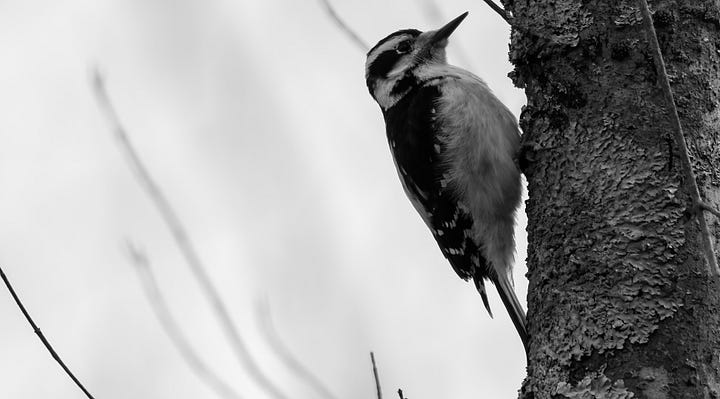
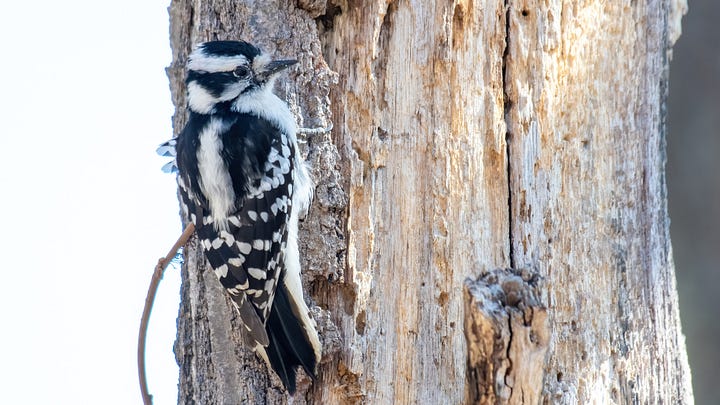
A milestone for birders is learning to tell Downy, Dryobates pubescens,1 from Hairy Woodpeckers, Dryobates villosus.2 Birds & Blooms says telling them apart “can be a challenge, but once you know what to look for, it’s not so tough after all!”

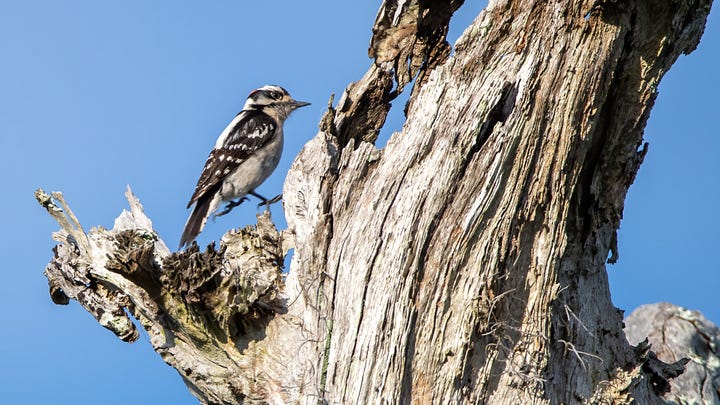
First thing to look for is size.
A Downy is around six inches; a Hairy is nine to ten. On paper that seems a big difference, but looking at a bird from a distance it isn’t massively noticeable. The size comparison is helpful, Birds & Blooms notes, when the species are “side by side, which doesn’t happen often.”
If you’re close to a woodpecker, and have been close to many—probably mostly Downy, abundant and more tolerant of suburbs—a little size difference might be all you need. The more woodpeckers you’ve been close to, the larger catalog of memories you’ll have to recognize if a woodpecker is large or small. A Downy is the size of a House Sparrow, Passer domesticus, a Hairy the size of an American Robin, Turdus migratorius.
It’s helpful to think in woodpecker terms when already thinking of woodpeckers. You can think of a Hairy as the size of a Red-bellied.
If overall size doesn’t answer your question, look at the bill.
Since the species aren’t typically side by side, bill size often helps more than overall size. A Downy’s bill is small, 1/3 the length of its head. A Hairy’s is the same length as its head and looks woodpeckery. A Downy’s is borderline stubby. Bird Watcher’s General Store says a woodpecker “with a menacing beak” isn’t a Downy. If plumage indicates it could be a Downy but the bill looks woodpeckery, it’s likely a Hairy.
Differences in drumming.
Aside from bill appearance, there’s a difference in how the birds use them. A Downy drums slowly. Bangor Daily News says you can “hear every tap distinctly.” The Hairy is “like a blur of taps.”
Mass Audubon says a Hairy drums “at least 25 taps/second; 20 seconds between.” A Downy, “15 taps/second; a few seconds between.” David Sibley says a Hairy drums with long pauses, while a Downy lacks them. If the taps you hear sound blurred together with longer breaks, it’s perhaps a Hairy.
Slight differences in plumage.
Bill size is usually sufficient, but plumage differences are good to know. The outer edges of a Hairy’s tail feathers are entirely white. A Downy’s are flecked with black—spots or barring. Another difference is in the red on the heads of males. Audubon explains, “the male Hairy’s red patch is often split in two.” A Downy's isn’t.
Are Downy & Hairy close relatives?
You might think their resemblance means they’re closely related. The species “aren’t evolutionary sisters,” explains Adirondack Almanack.
Living Bird adds, they “split off from a shared ancestor over 6 million years ago—about as far back as chimps and humans split.” Their similar appearance is credited by many to convergent evolution. They evolved separately and wound up with similarities. When Hairy Woodpeckers are geographically far from Downy, they look different, “as if they are free to change appearance,” says Adirondack Almanack. When ranges overlap they look similar.
American Bird Conservancy raises that perhaps the Downy “evolved to look like the more formidable Hairy Woodpecker in order to compete for food with larger bird species.” Adirondack Almanack adds other scientists link the resemblance to territoriality and competition for resources. “Converging on a similar look may be a way…to identify competitors more easily.”
A hypothesis presented in Living Bird is Downy and Hairy Woodpeckers are an example of “‘plumage mimicry’—one species of bird evolving to match the plumage patterns and colors of another.” This occurs when species interact socially and is seen in woodpeckers around the world.
There are many theories why Downy and Hairy Woodpeckers look similar. I can’t answer that question but can help you tell them apart.
To end: Pop Quiz
Which species is in the below photo? Answer in the comments.
Recommended Reading:
Are Woodpeckers Evolving to Look Like Each Other? A New Study Says Yes - Living Bird, Summer 2019, Marc Devokaitis
“After comparing millions of eBird observations, satellite readings of habitats, and complex color and pattern measurements of the woodpeckers, their results showed that geographic overlap—sharing ranges—was a better predictor of look-alikes than genetics, habitat, or climate.”
Getting Away With Murder, pts. 1 and 2 -
’s For The BirdsThe opening of pt. 1: “The most disillusioning experience of my entire life was when I went down to the Gulf in July 2010 following the BP oil spill. I saw firsthand the power BP had exerted over several of my most respected and even beloved scientific, educational, and conservation non-profits, the Obama administration, and individual human beings.” Listen on Apple Podcasts.
A Trusting Jay - Easy By Nature,
“My experience with Blue Jays is that they are at a remove, watching me watch them. If they happen to come close to me, it is only for a few seconds, never long enough for me to raise my camera, focus, and take a picture.”
What’s In a Name? - Heartfelt Expressions, Nature Connections,
“In my world, chickadees are chickies (or chickees?), chick-er-dees, or even cheekies; combine a couple to get cheeky chick-er-dees. Nuthatches are nutties; towhees are toe-toes (though I guess that should be tow-tows? hmmm…); and jays are inevitably jay-jays. I also often pronounce juncos more like d’uncoohs.”
If you enjoy Rock & Hawk, consider subscribing. For small, one-time contributions I have a “Buy Me a Coffee” tip jar. Liking, sharing, and/or commenting cost $0.00.
Formerly Picoides pubescens.
Formerly Leuconotopicus villosus.


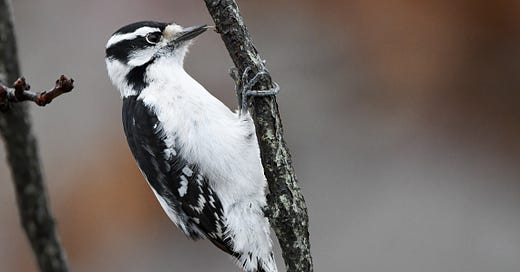


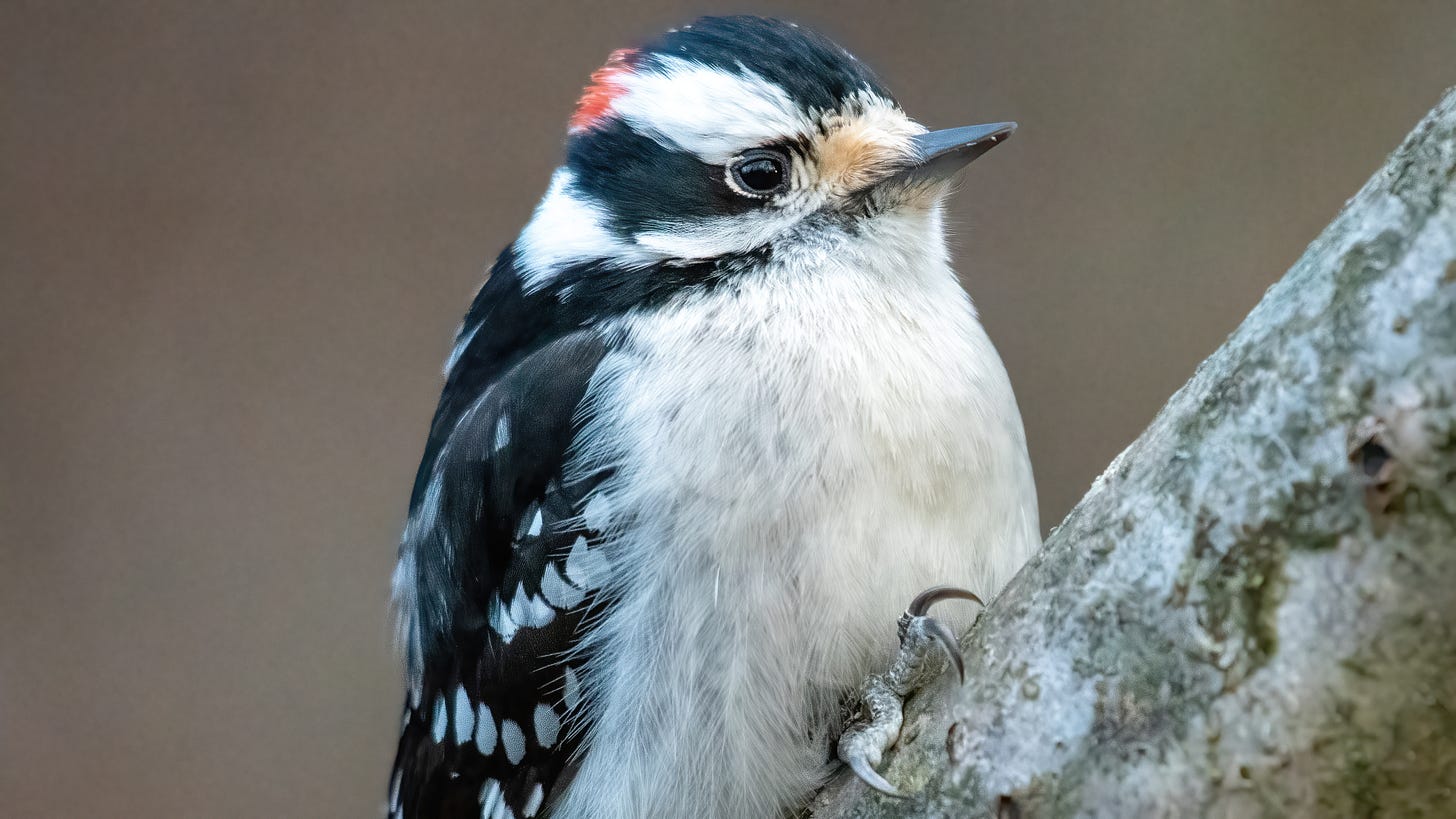
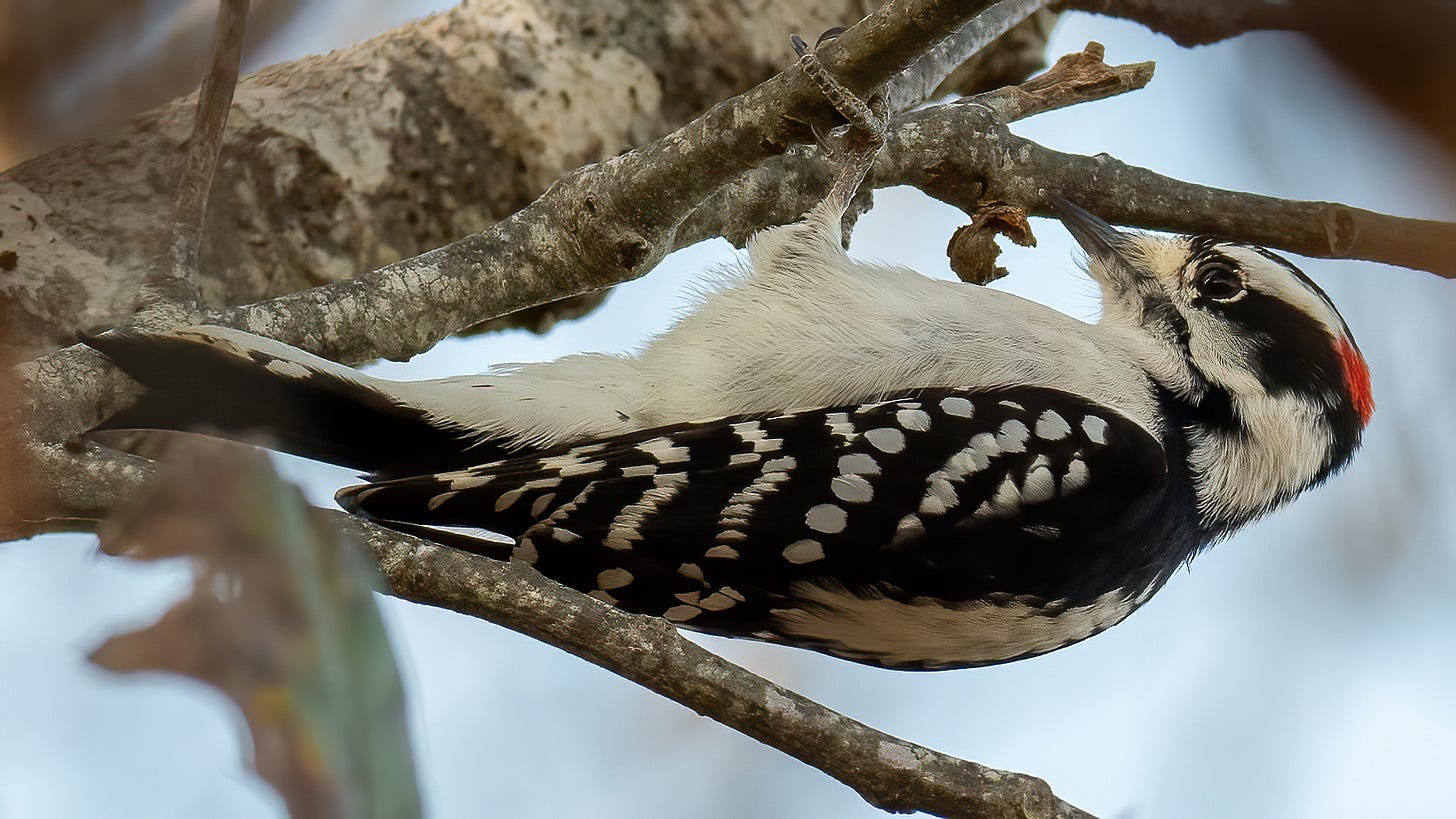

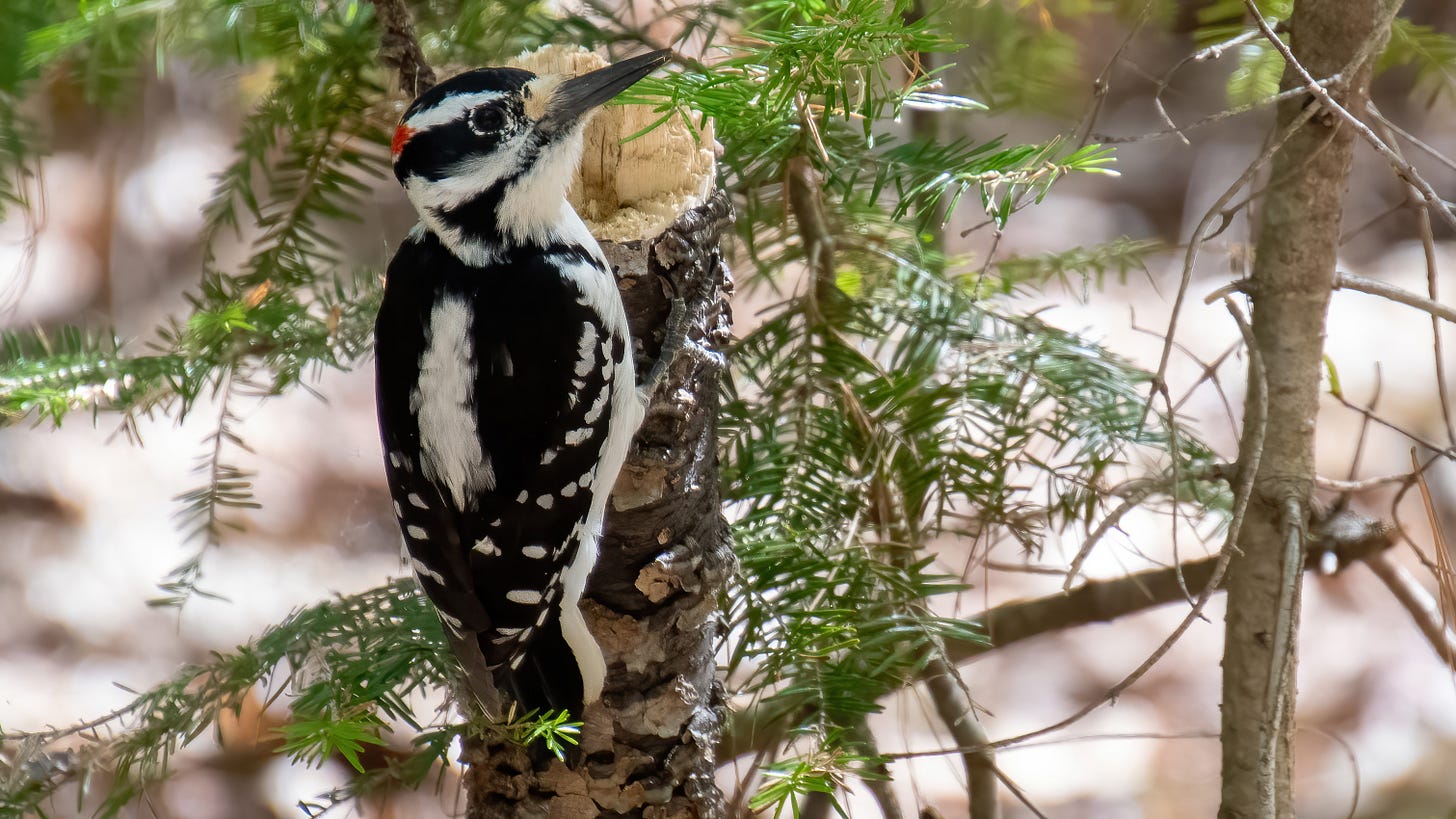

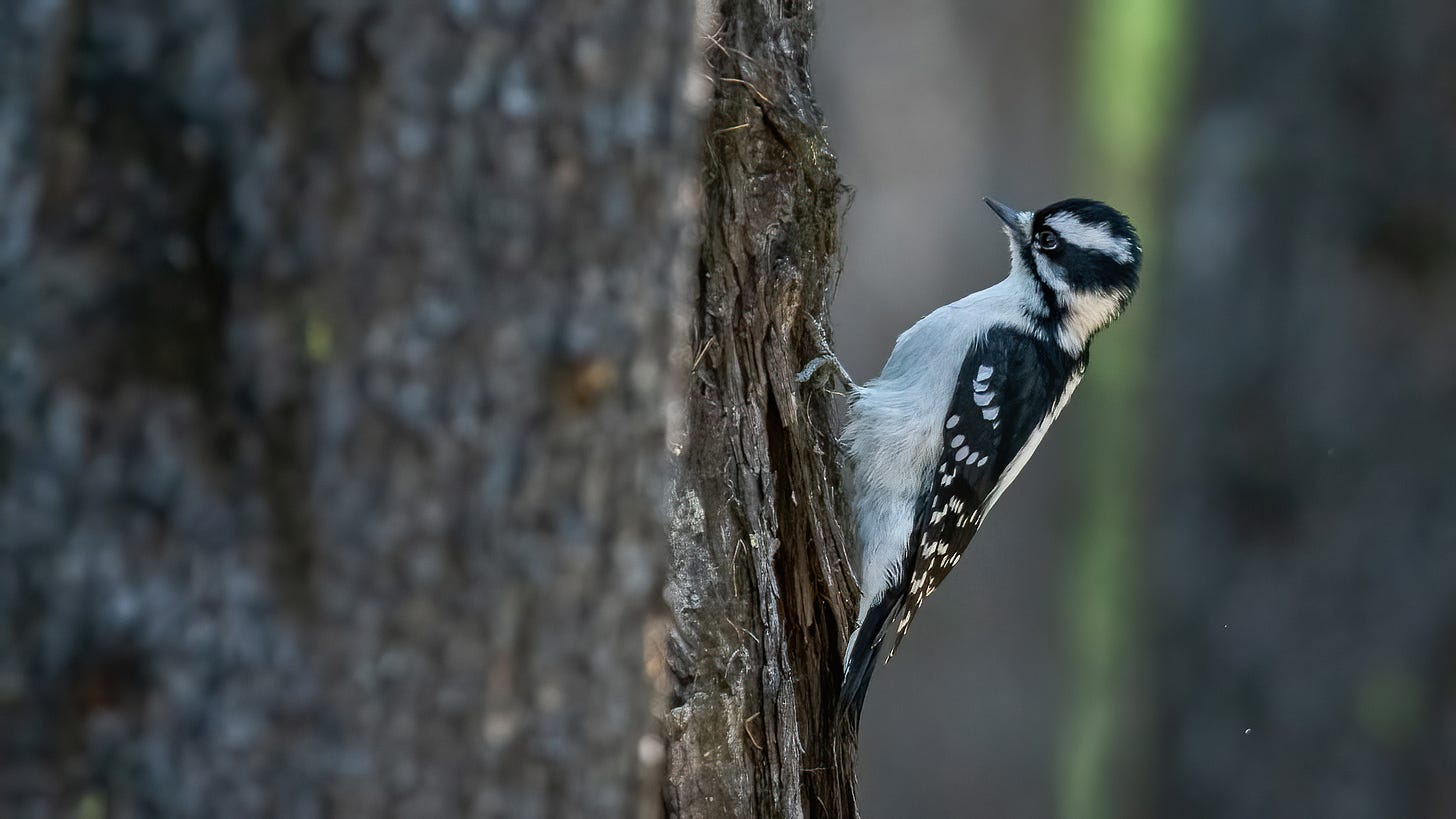
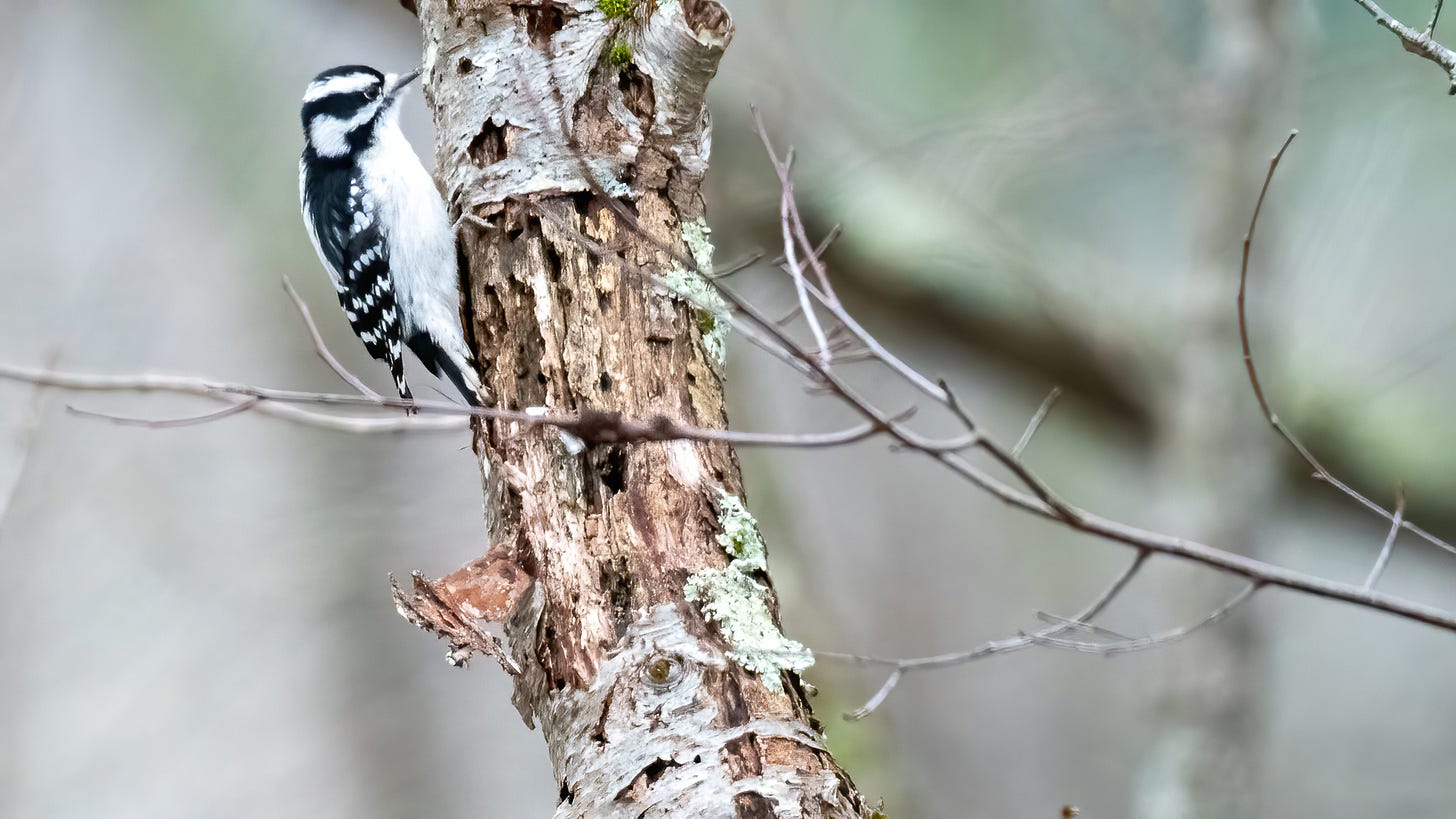
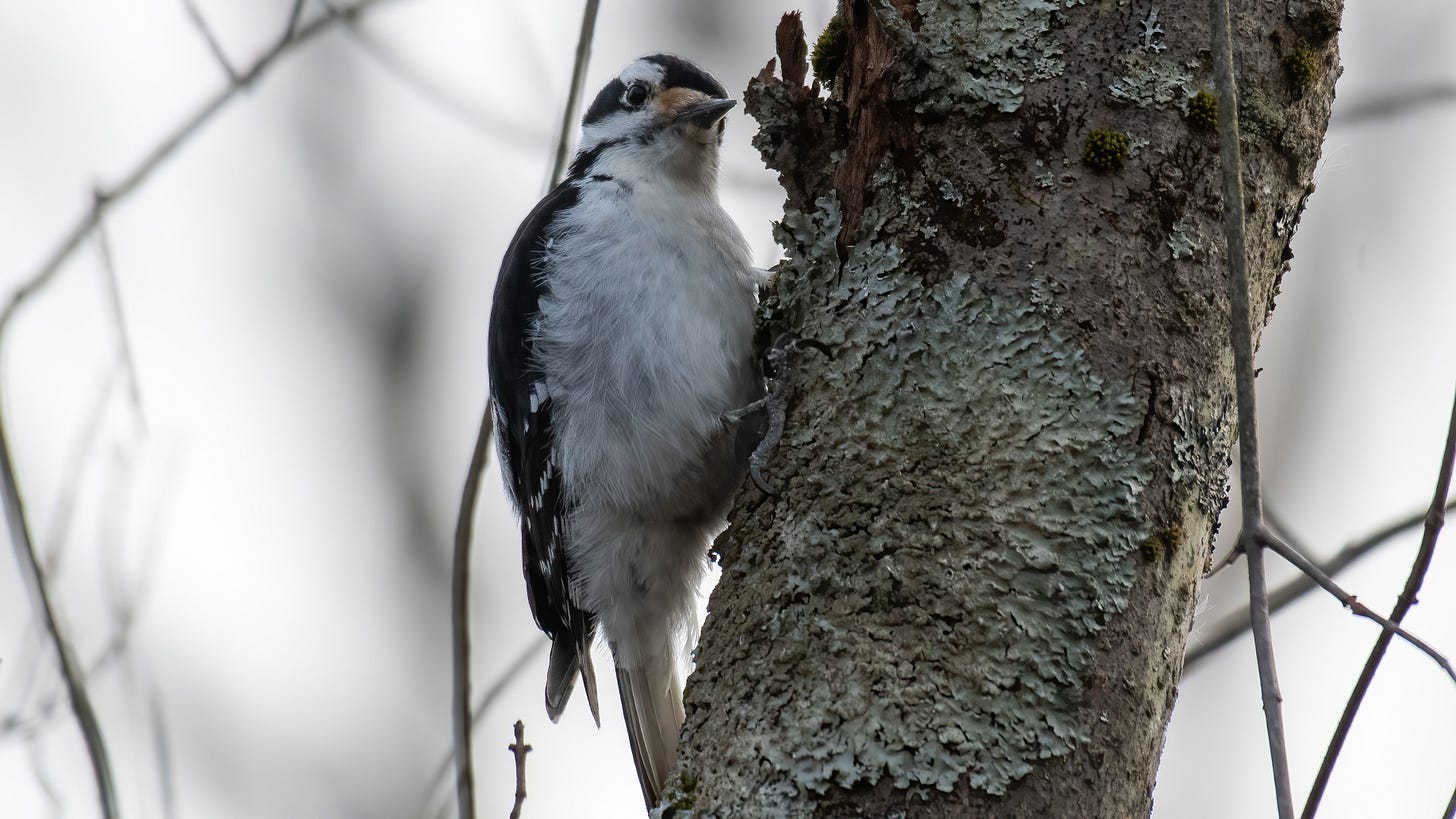
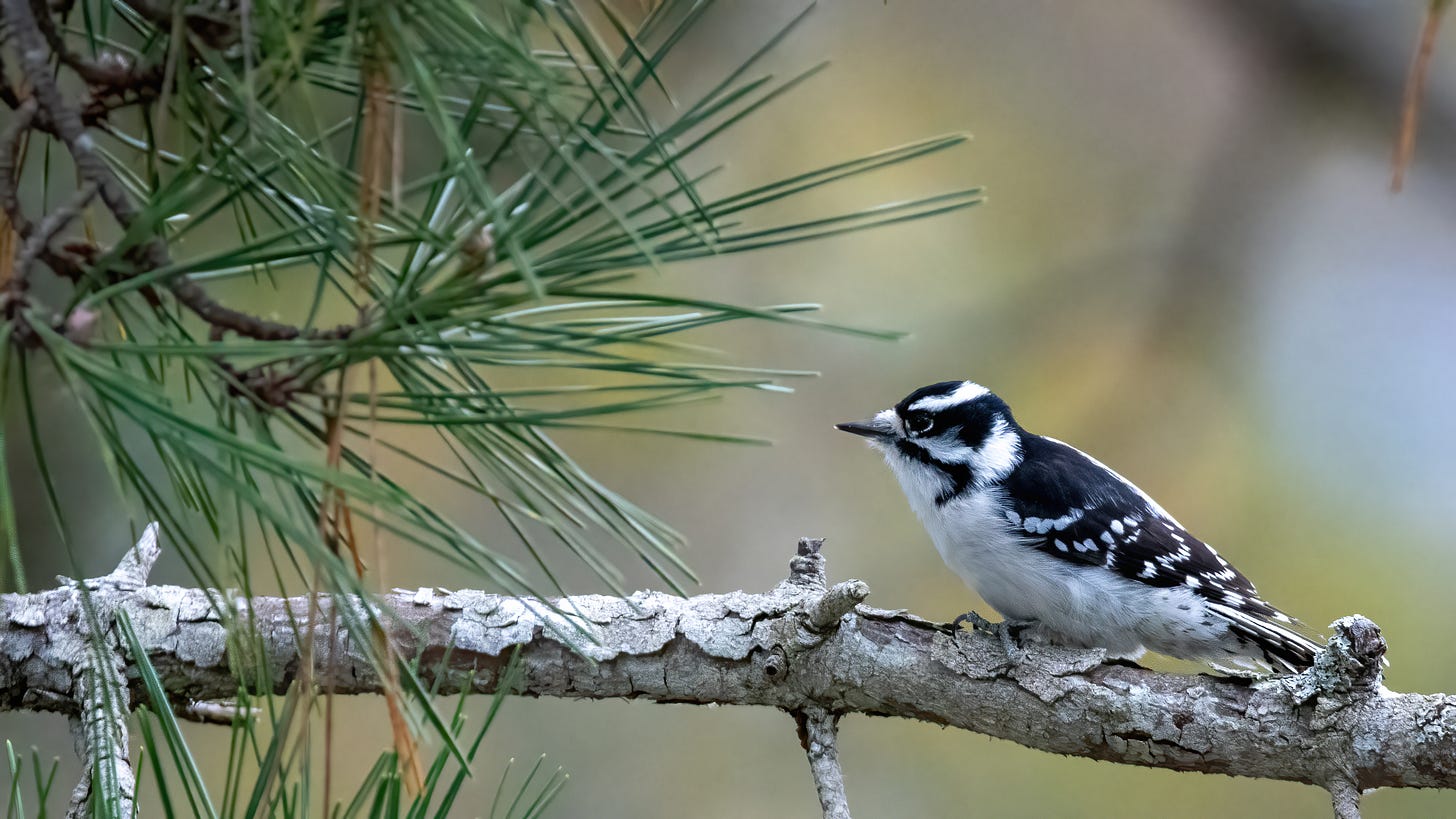

What a fortunate coincidence for me, James. About two weeks ago I found a decedent woodpecker on my morning walk with my sweet Labradoodle. Birds fascinate me. While nothing close to a devoted birder I admire details and this one stymied me. I checked my Patterson Eastern US Guide and an old, well used Audubon Field Guide. After much back and forth I settled on an immature Downy Woodpecker. Recent death, as rigor mortis had not set in. The undamaged eye was still quite clear. Its weight in my hand was almost undetectable. I offered a prayerful return to Great Spirit, the home of us all. Thanks ever so much.
I really enjoyed this detailed article, especially as I have both hairy and downy woodpeckers on my land all the time and it indeed can be a challenge to keep them straight. We also commonly have red-bellied woodpeckers. And every five years or so, we have the good fortune to welcome a pileated woodpecker to our window feeder. They are like the aircraft carrier of woodpeckers...